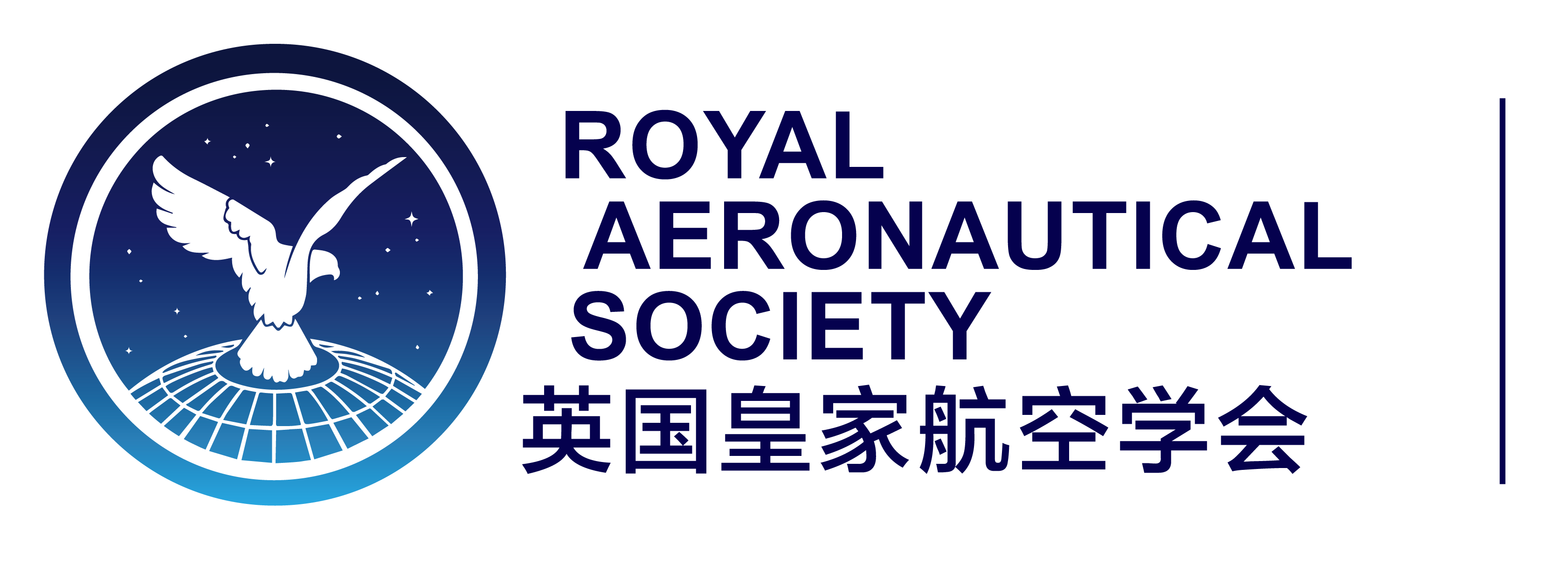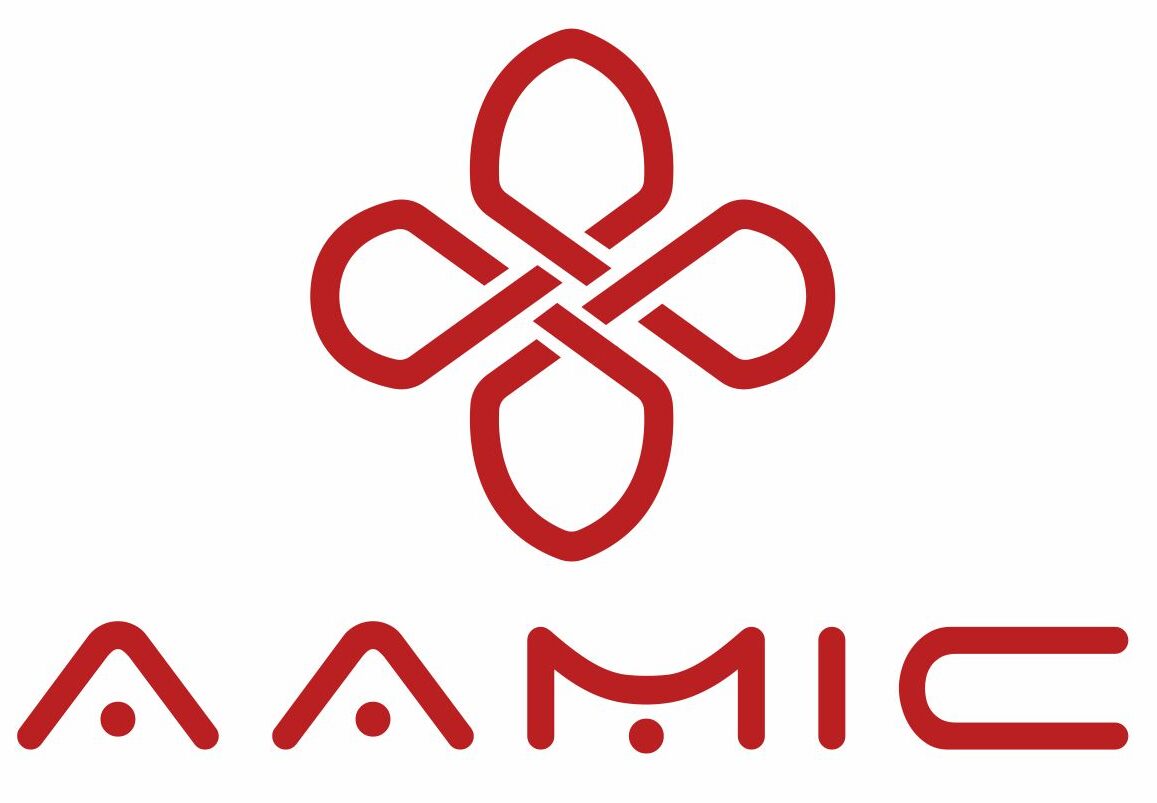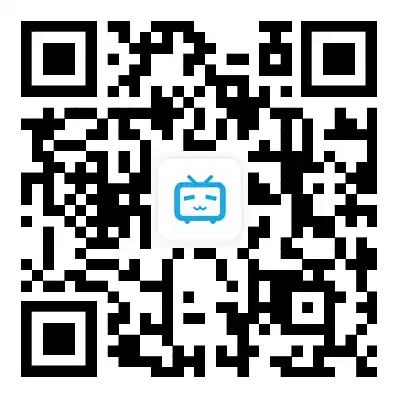Industry Insights|Where do eVTOL pilots come from?
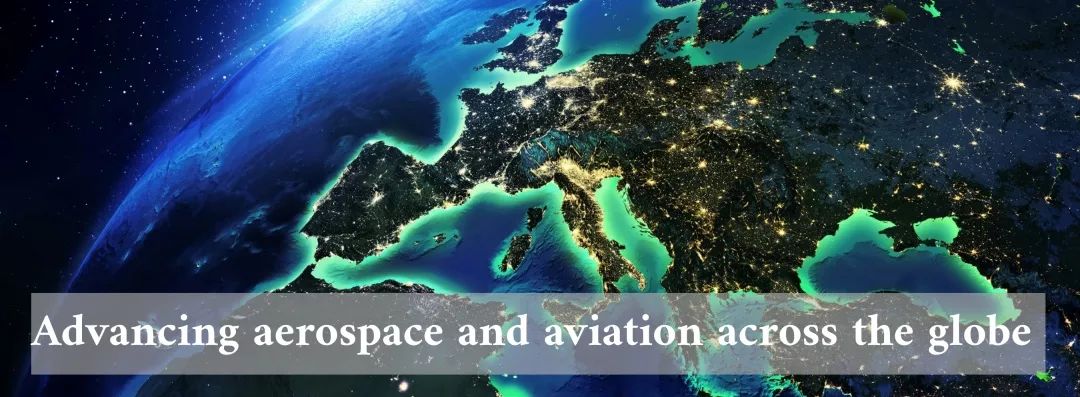
The aviation industry has been struggling with a severe shortage of pilots following the 2020 global pandemic, which is expected to grow to 35,000 to 50,000 in about five years.
During this summer's Paris Air Show, flight training provider CAE predicted that 1.3 million new aviation professionals will need to be hired by 2032. The company's 2023 Aviation Talent Forecast predicts that the commercial and business aviation industries will need 284,000 pilots, 402,000 maintenance technicians and 599,000 cabin crew to fill vacancies created by retirement and attrition, as well as industry expansion.
Meanwhile, a recent study of the aerospace engineering industry by recruitment consultancy AeroProfessional said 27% of aircraft engineering staff will retire in the next decade. In addition, it claimed that 45% of engineers are considering moving to other industries.
As bad as it is to rain, airlines and the business aviation industry are concerned about the combination of fewer workers and increased passenger demand, but what impact will this have on the emerging future air mobility (AAM) market?
Stella-Marissa Hughes is Head of Future Air Mobility Strategy, Business Development and Partnerships at CAE. She trained as an engineer and joined CAE Canada in 2015 as part of its Engineering Innovation team. After working in R&D strategy, she moved into Civil Business Development working with OEMs and has been part of the AAM team for the past three years.
White Paper
白皮书
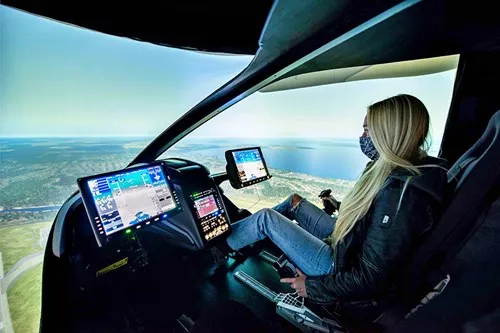
In 2020, CAE formed a dedicated team that includes experts in design, regulatory affairs and simulation. "We are looking at pilot training and maintenance personnel training, because both of these will come in handy soon. But we need to make sure they receive the same level of safety training. At the same time, we are also thinking about how to encourage people from all walks of life to join the industry.”
Creating the correct culture
创造正确的文化
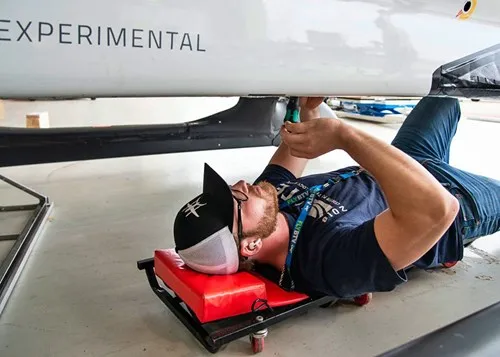
We actually see this as an advantage because creating a new culture of hiring is an opportunity to positively reshape the industry and avoid stagnating. By ensuring that new recruits align with modern values, there is an opportunity to move the industry away from ex-military and other cultures that have traditionally been less supportive and inclusive of women and minorities”
On a personal note, Hughes found the aviation industry particularly inspiring in its transition into the AAM field. “A lot of the time, I was working with people who were similar to me, young professional women in their 30s. I was used to being asked about my age and qualifications when working in more traditional aviation sectors, but AAM provided an empowering opportunity for many women early in their careers. We also took on projects and are continuing to move forward. We are definitely making a difference!”
Creating a curriculum
创建课程
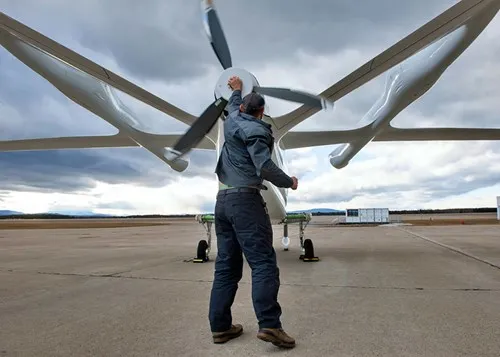
“However, because EASA and the FAA had not yet established regulations, we had the opportunity to actively work with the regulators and try to implement best practices we had learned from the military, airline training, and other industries [CAE has a large medical training subsidiary]. For example, should we focus on competency-based training? Rather than focusing on prescriptive training where students have to learn 16 modules, should we focus on what the outcomes of learning are? The civil aviation industry does the latter and has been doing it for generations, so regulators need to overcome inertia to modify established syllabi. However, when there is no established training program, we have the opportunity to ask questions like, "Are these pilots competent?" and "Will they fail a certain part of the course?" We have the opportunity to keep tweaking the curriculum until it is met. But for this we need data. This is one of the reasons we started working on the regulatory side very early on.”
As of summer 2023, CAE is working with its OEM partners to help them improve the maturity of their technical documentation, pilot operating handbooks, and more. “Once everything is complete, it can be used in the courseware,” Hughes explains. “The course can’t be certified until the aircraft is certified, and the regulators won’t recognize anything until the aircraft is type certified. However, our training program is synchronized with type certification, and a lot of work can be done in advance to ensure we are ready when the time comes.”
Augmenting reality
增强现实
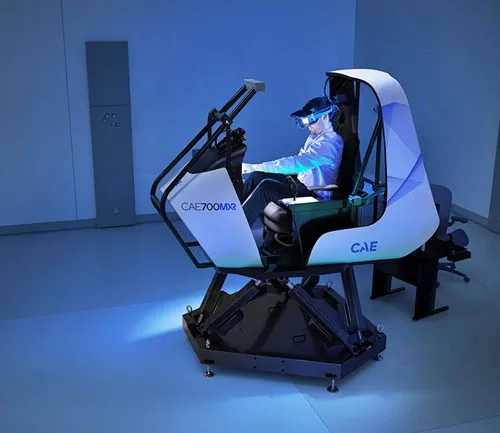
The company’s innovative pilot training programme will utilise advanced technologies such as mixed reality and artificial intelligence to enhance the learning experience. “The use of immersive technologies such as AT and VR for flight training is starting to gain traction with regulators,” explains Hughes. “It means we can make training faster, better and more affordable – but, again, it takes a lot of time and a lot of data to validate, which is why this is another activity we started very early on.” Hughes also highlights another advantage of using immersive technology in training. “My friends and I play VR and a lot of kids have access to the technology at home, so this is how we get people involved. New training courses must include VR. Go to any university today and you’ll see students watching YouTube videos because books and classroom tools aren’t suited to modern learners who are used to taking in information quickly. So AAM training needs to reflect this.”
Candidates
候选人
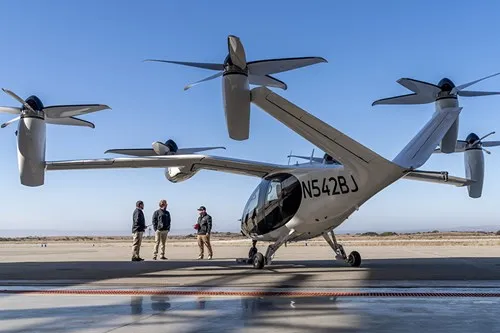
“EASA has created a career path for the CPL A and CPL H (Class A and H Commercial Pilot License) community to obtain a type rating that assesses the ability to fly eVTOLs,”EASA has created a career path for the CPL A and CPL H (Class A and H Commercial Pilot License) community to obtain a type rating that assesses the ability to fly eVTOLs.”
“Neither EASA nor the FAA has provided a pathway to entry into electric vertical takeoff and landing, at least early on, so those who want to fly AAM aircraft will need to be licensed commercial pilots first,” Hughes stressed.
While this may seem like a hindrance to recruiting talent, it does present some interesting opportunities. Some commercial pilots never returned to work after the pandemic-induced lockdown, others have reached a stage in their lives where they don’t want to be away from home at night often, and some simply want to fly less.
“We need to incentivize AAM flying and make it a viable career option,” Hughes stressed. “We should work as an industry to achieve a goal where hours flown in eVTOLs can also count toward a pilot’s future career. It’s important that regulators listen to industry on this.”
Work/life balance
工作/生活平衡
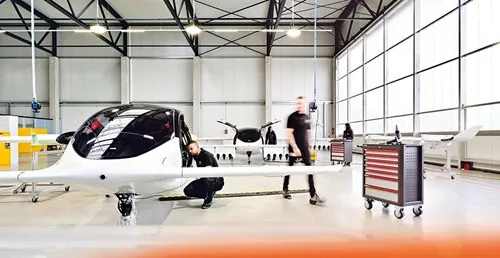
One factor to consider when it comes to work/life balance is pilot fatigue. While AAM crews avoid the stress of eight-hour segments and overnight layovers, the average sorties are short and dense. Fixed-wing commercial pilots typically fly two to four critical phases of flight (takeoffs and landings) per day, while pilots of electric vertical takeoff and landing aircraft may perform the same number of operations per hour. "Plus, the passenger sitting behind you will ask you questions - so you are both a crew member and a pilot!" Hughes added. "Also, the low airspace over city centers can be very congested, and until we have a very reliable (unmanned air traffic management system) UTM, the workload of coordinating air traffic will be very large.”
Operating costs
运营成本

“As the industry does what it can to reduce the cost and complexity of training, it will be important to seize opportunities to work with regulators to incorporate AR and other advanced training aids,” Hughes said. “Going one step further, we can look at data analytics to streamline training and focus on the problems students really need to solve. Finally, this data will also be useful to insurance companies, as some single-pilot helicopter operations are currently almost impossible to insure. Add to that the fact that this is a novel aircraft, flown by a single pilot, flying through a congested urban environment, so upfront discussions with insurance companies will be critical. It’s important that we can go back to the training data to truly close the loop and prove that AAM is effective and safe.”
Keep ‘em flying
保持飞行
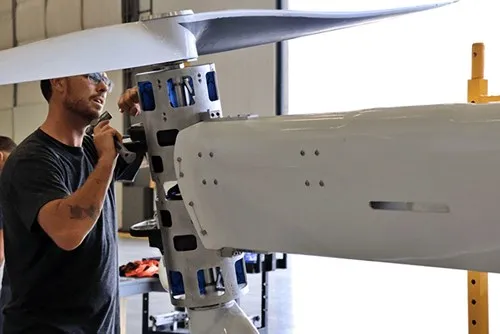
However, how can maintainers become certified to service the myriad of different aircraft designs that OEMs expect to bring to market in the coming years?
“There is more discussion in the industry about this. “If you have an A&P (airframe and/or powerplant technician) qualification today, you can service any aircraft, provided you have training to operate it,” she explains. “Of course, it takes a very long time to get an A&P qualification. We need to consider whether this qualification is really applicable to advanced air mobility vehicles. The systems of these vehicles are very different to traditional aircraft, they are more like computers than traditional helicopters. The people who service these aircraft need to have a software background and possibly cybersecurity skills, etc. So maybe it is possible to avoid getting an A&P qualification with a specific type of training - but we also need to consider what this means for the careers of technicians who want to move into other areas of aviation. This needs to be a stepping stone to other places, providing attractive career options while maintaining safety. Like many aspects of the future of air mobility, this is still a work in progress.”
Planning ahead
提前规划
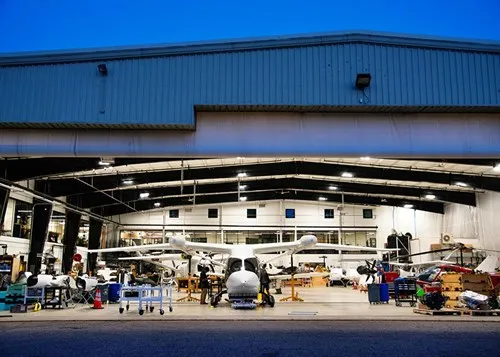
A busy scene in the engineering hangar, where eVTOL and traditional aircraft are being repaired. Is this true in reality?(Beta Technologies )
